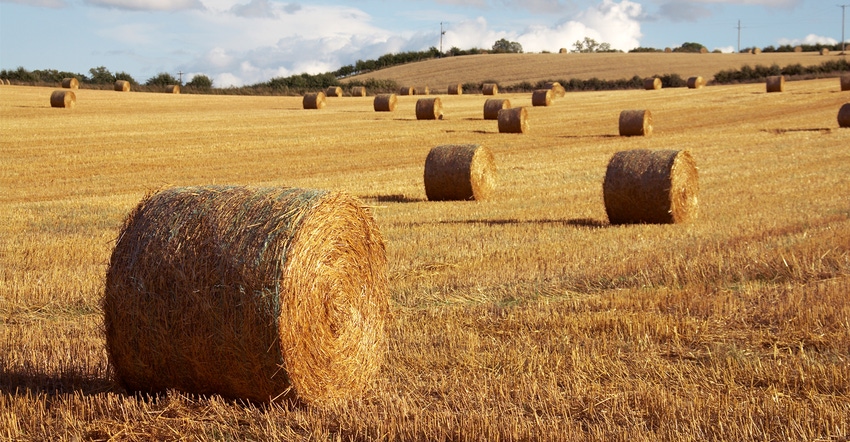March 2, 2021

A substantial amount of less-than-ideal alfalfa acreage remained in production these past three growing seasons across Wisconsin. Widespread and significant winterkill, particularly in northeast and east-central Wisconsin, provided farmers with few options other than to maintain those stands as they attempted to establish new alfalfa seedings to replace them.
Having not been dealt many aces lately, farmers can learn a lot from a Kenny Rogers song, an on-farm data collection project that began in 2007, and Mother Nature about the true cost of those decisions. Rogers knew “the secret to survin’ is knowin’ what to throw away and knowing what to keep.”
Wet weather cycle
Beginning in 2013, we have been experiencing what meteorologists at the National Oceanic Atmospheric Administration and National Weather Service call a “wet weather cycle.” These cycles generally last seven to 10 years. If you do the math and check NOAA’s latest outlook, the agency is predicting we have an enhanced probability of receiving higher-than-normal precipitation again this spring.
Alfalfa project
The Wisconsin Alfalfa Yield and Persistence (WAYP) project, an ongoing collaboration between farmers, county agents and educators, and University of Wisconsin staff can illustrate exactly what has happened in some of those fields.
An alfalfa stand that was newly established in 2017 in Outagamie County had yield and quality data collected during its full production years in 2018-20. The first year of full production, 2018, resulted in two cuttings, second and third crop, being harvested at excellent relative forage quality, 179 and 193 RFQ respectively.
Unfortunately, first and fourth cuttings that year were a different story, posting values of 148 and 117 RFQ, respectively. The dry matter yield for the season was 4.08 tons. Using the individual milk-per-ton values for each cutting and multiplying by the corresponding dry matter yield, we were able to calculate the estimated milk per acre (MPA) of 11,341.69 pounds.
Wet weather damage significantly affected the quality of the first and fourth crops. Measured yield was slightly below the WAYP mean of 4.42 tons DM per acre as the April 2018 blizzard damaged stands where the alfalfa had already broken dormancy. 2019 would have to be better, right?
Unfortunately, the “worst growing season in 50 years” was waiting for us. Alfalfa stands that were already stressed in 2018, suffered extreme winterkill and emerged in 2019 with the most uneven growth I have ever seen in my career.
Alfalfa sets buds in the fall for the coming spring’s growth; however, many of those buds were killed, and the plants had to start all over again, exasperating already diminished carbohydrate and stored food levels in the roots.
While total yield on this field fell by 0.51 ton DM resulting in 3.56 tons DM for the season, the quality of the harvested haylage was outstanding. RFQ values of 184, 182, 192 and 194 resulted in just over 11,285 pounds of MPA, a difference of only 56.35 pounds less milk over the entire growing season compared to 2018.
Gambling for success
Timing of cuttings resulted in a loss of less than 1 cwt of milk. This proves strategic management and a little cooperation from Mother Nature can overcome yield loss from one year to the next. Much like the “Gambler,” could we hope to “break even” yet again in 2020?
Wet weather pushed first cutting dates into June for the third straight year. However, cooler temperatures resulted in a slower rate of growth and maturity. In fact, we harvested the highest levels of RFQ from this field in 2020. RFQ values were 216, 208, 212 and 213 for first through fourth cuttings, respectively.
Surely, regardless of the yield loss we would likely experience once again, we would be able to keep pace with the previous year’s MPA, right? Not so fast. While our RFQ and MPT values were exceptional, the alfalfa plants themselves were stressed, damaged and exhausted more than fully realized. The 2020 DM yield fell to 2.65 tons for the season, a 0.91-ton DM reduction from 2019. The result: about 9,192 pounds of MPA for the season, a loss of about 2,094 pounds MPA from 2019 to 2020.
Exceptional quality means very little if you do not have an adequate amount of DM yield to go with it. What does this equate to in terms of “bulk tank economics?” Well, 2,093 potential pounds of milk equals about 21 cwt of milk. If we use $16 per cwt, that is $335 of lost milk revenue.
The lesson? “You got to know when to hold ’em, know when to fold ’em.” If you have stands that you suspect are marginal, ask yourself can you afford to lose $335 per acre in potential milk revenue from that acreage or should you possibly interseed a grass like Italian rye, rotate to corn silage, or plant another alternative forage crop? Here’s hoping “there’ll be time enough for countin’ when the dealings done.”
Jarek is the Outagamie County Extension crops and soils agent.
About the Author(s)
You May Also Like




